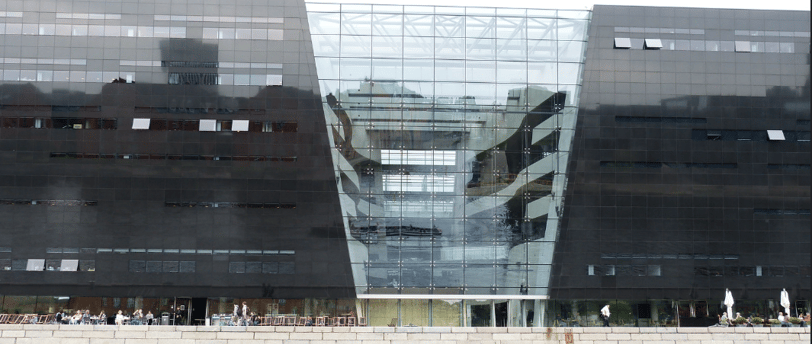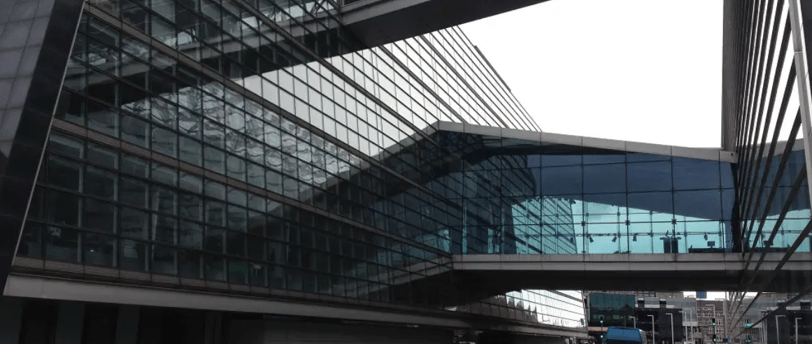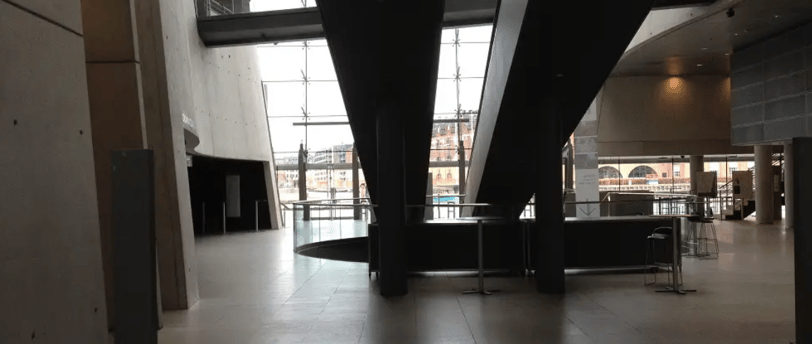Royal Danish Library: The Black Diamond – Iconic Modern Architecture & Cultural Legacy in Copenhagen
Legacy as a symbol of modern Danish design !
TSI BLOG
TSI Architects & Engineers
4/6/20253 min read


Introduction: The Vanguard of Modern Architecture
Modern architecture, emerging in the early 20th century, revolutionized design with its emphasis on simplicity, functionality, and innovation. Rejecting ornate traditions, it championed clean lines, industrial materials like steel and glass, and a harmonious relationship between form and purpose. Nestled along Copenhagen’s waterfront, the Royal Danish Library—affectionately dubbed The Black Diamond —epitomizes this ethos. Completed in 1999, its bold geometry and stark aesthetic have cemented its status as a modernist masterpiece, bridging Denmark’s maritime heritage with cutting-edge design.
Architectural Vision: Dialogue Between Past and Future
Designed by Danish firm Schmidt Hammer Lassen, The Black Diamond was conceived as an extension to the neoclassical Royal Library (1906). The architects sought to create a “cultural beacon” that honored history while embracing the future. Inspired by Deconstructivism’s fragmented forms and the Bauhaus emphasis on functionality, the design juxtaposes a monolithic black granite exterior with a luminous glass atrium. “We wanted to craft a dialogue between old and new—a diamond that reflects both light and legacy,” said founding partner Morten Schmidt.


Design Features: Contrast and Connection
The building’s most striking feature is its angular, obsidian-like facade, clad in polished black granite that mirrors the sky and water. This “diamond” metaphor extends to its crystalline structure, which cantilevers dramatically over the harbor, defying gravity. Inside, a soaring glass-roofed atrium floods the space with natural light, creating a vibrant communal hub. The layout seamlessly connects the historic library via a transparent corridor, symbolizing the fusion of tradition and innovation.
Materials were chosen for both aesthetics and symbolism: the granite’s weight grounds the building, while the glass atrium represents transparency and accessibility. Structural innovations, including reinforced concrete cores and steel beams, enabled the daring cantilever, a technical feat that pushed 1990s engineering boundaries.
Historical Context: A Symbol of Denmark’s Cultural Renaissance
The Black Diamond arose during the 1990s, a decade marked by Denmark’s cultural renaissance and globalized ambitions. As Copenhagen sought to reinvent itself as a modern metropolis, the library extension became a statement of civic pride. The project coincided with advancements in material science and digital design tools, allowing architects to experiment with complex geometries. Societally, it responded to a growing demand for inclusive public spaces, housing not just books but exhibition areas, cafes, and auditoriums—a “living room” for the city.
Cultural Significance: Controversy to Icon
Initially polarizing, the building’s stark contrast to Copenhagen’s historic skyline sparked debate. Critics called it “a black hole,” while supporters lauded its audacity. Over time, it has become a beloved symbol of Danish innovation, featured in films and tourism campaigns. Its success influenced later projects like Oslo’s Opera House and Stockholm’s Public Library, proving that modern architecture could coexist with heritage sites.


Conclusion: A Legacy of Boldness and Balance
Twenty-five years later, The Black Diamond remains a testament to the power of architectural daring. It teaches that modernism need not erase history but can elevate it through contrast and connection. As cities globally grapple with balancing heritage and progress, the library stands as a lesson in harmonious coexistence. For architects and dreamers, it whispers: innovate fearlessly, but remember the past.
“Architecture should be a conversation,” Schmidt once remarked, “not a monologue.” In Copenhagen, that conversation continues to shine.
Quote from Architect: “The building is a mirror—reflecting the city’s soul and the sea’s ever-changing light.”
Anecdote: During construction, engineers used a 1:10 scale model tested in wind tunnels to ensure the cantilever’s stability, a first in Danish architecture.
Comparison: Like Paris’s Centre Pompidou, The Black Diamond redefined its city’s identity, proving that cultural institutions could be both functional and iconic.
TSI Architects & Engineers
© 2024. All rights reserved.
